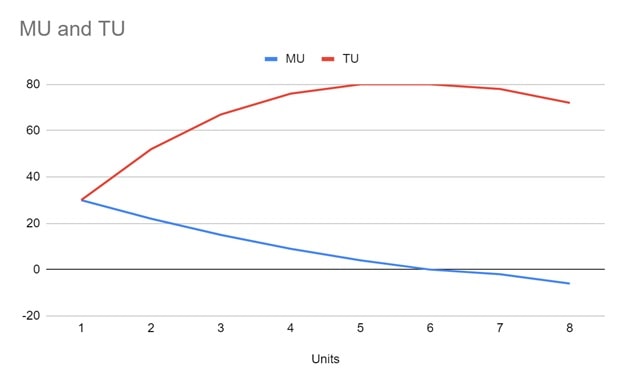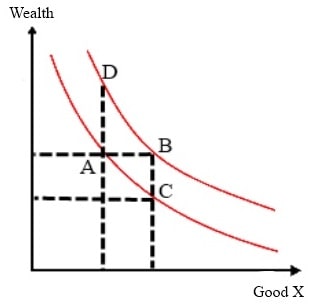Consumer behaviour homework help
The whole premise of micro- and - macro is based on the assumption that the consumer and other participants make rational choices. This assumption is very important as it is what gives Economics stability. Here we will talk about rational consumer behaviour, utility, diminishing marginal utility theory and much more. For learning more about the basic assumptions on economics, get{" "} consumer behaviour homework help from the best tutors. Also, get your{" "} consumer behaviour assignment help and get all your assignments based on this topic completed.
Incentives and types
First, let’s start with the idea of incentives and their types. Incentives are also one of the basic assumptions. It means a reason which motivates the consumer into choosing whether negative or positive, based on their needs, wants and desires. There are two types of incentives:
Positive Incentive: If a reason or motive makes the consumer make the purchase then it is a positive incentive. For example, if shops give discounts, then it would mean more purchasing power and people in favorable of buying
Negative Incentive: If a reason or motive or action makes a consumer not favourable of making a purchase then they are a negative incentive. For example, if the government increases the tax on tobacco, then it would increase the prices of products, resulting in a fall in purchases.
To learn more about the incentives, or to get more content on it, get{" "} consumer behaviour homework help.
Utility
Utility refers to the satisfaction the individual gets when the goods and/or service is consumed. There are two kinds of Utility: Cardinal and Ordinal. Before we get into that, let’s follow up with other terms associated with the utility.
- Marginal Utility: It refers to the utility received while consuming the particular unit. It is referred to as MU.
- Total Utility: It is satisfaction achieved while consuming all the goods/services. It, therefore, is the addition of all the MU. It is denoted as TU
Cardinal Utility: Theory proposed by Alfred Marshall, puts forward the idea of Cardinal Utility, it proposes the idea of measuring the satisfaction received by the consumer. It is not very realistic as it is not possible to calculate the satisfaction received.
But still, due to this theory, we receive a very important concept of diminishing marginal utility. We will discuss this later. To learn more about cardinal utility, get{" "} consumer behaviour homework help from expert tutors. For assignment submission before deadlines get consumer behaviour assignment help, and get plagiarism-free, quality assignment.
Ordinal Utility: J.R. Hicks and R.G.D. Allen proposed this theory, meaning that the utility derived by the consumers cannot be measured but it can be compared with other utilities. This method is better as it is more qualitative and comparative, therefore more realistic. For more theory on ordinal utility and help with work, get{" "} consumer behaviour homework help from experts.
For this, they came with the Indifference curve. Every point on the indifference curve gives the same amount of utility to the consumer. We will learn more about the Indifference curve later.
Diminishing Marginal Utility Theory
While taking some exceptions and assumptions, it is proposed and universally accepted that the Marginal Utility decreases while consuming each unit. To understand it more let us take an example of a person consuming bread. The table will represent MU for each unit of bread he consumes, and also the TU.
|
Units |
MU |
TU |
|
1 |
30 |
30 |
|
2 |
22 |
52 |
|
3 |
15 |
67 |
|
4 |
9 |
76 |
|
5 |
4 |
80 |
|
6 |
0 |
80 |
|
7 |
-2 |
78 |
|
8 |
-6 |
72 |
This example shows us how the man will behave. That is supposed, if the man was hungry, then the first unit consumed by him would give him great satisfaction. As he goes on consuming bread his hunger will finish, when it comes to the point that he has eaten his hunger’s equal. If he still consumes at this point, then it will discomfort him and thus the negative marginal utility.
The below graph there represents MU and TU.

To learn more about DMU and the curve with its usage, get{" "} consumer behaviour homework help where all of this is covered by our experts. Also,{" "} consumer behaviour assignment help provided by us can let you get awesomely accurate well-written answers.
Indifference Curves
Indifference curves follow the ordinal utility theory, and instead of calculating, the utility of one commodity, we make a bundle of goods and services and each bundle on the IC line curve has the same utility for them.
Two IC curves never intersect each other and the upper IC curve gives more satisfaction than the lower IC curve. If you want to know the reason for this then get{" "} consumer behaviour homework help and complete your homework on this topic with the help of our tutors.
For example:
A man buys apples and oranges from the market. Assuming that he has limited resources to do so, we consider that he will have to make a choice. The following sets of bundles will provide him the same satisfaction.

In the graph above point both A and C gives out the same satisfaction Also in this, bundle B offers more satisfaction in comparison to bundle A and C
An indifference curve is commonly used for equilibrium and therefore one should know concepts about them with precision. There are also some exceptions and assumptions and therefore one needs to know all before writing an assignment. Get{" "} consumer behaviour homework help, so we will complete your homework, while you also get good content in which you can study for exams. Get{" "} consumer behaviour assignment help for getting duly completed assignments with the quality content you can use. You can also use{" "} consumer behaviour homework help to get notes by our expert tutors on this topic.

